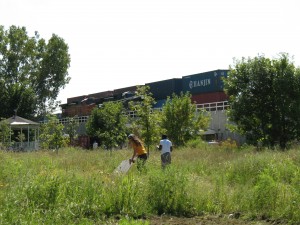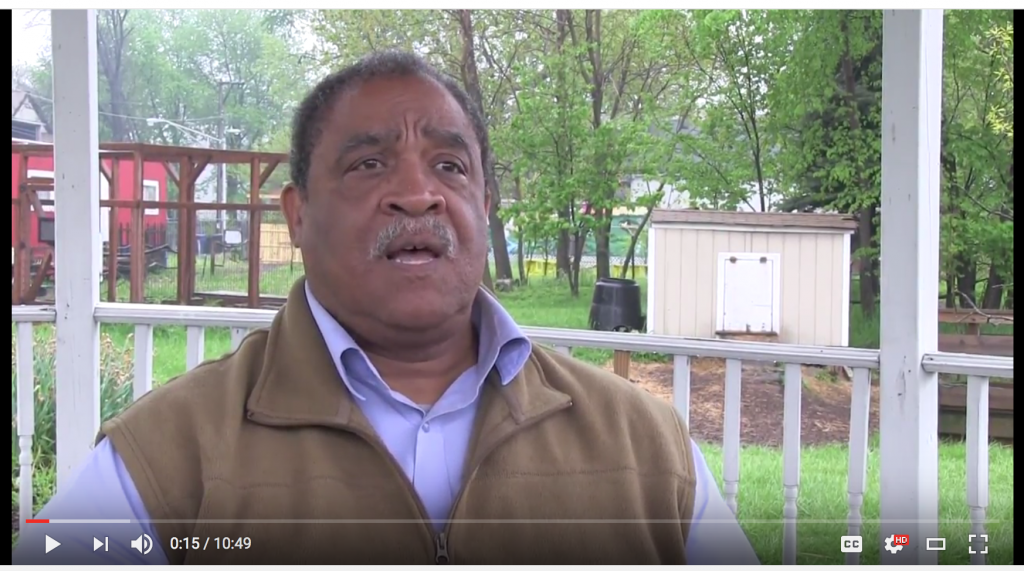 This March saw the publication of the new book Wildness: Relations of People and Place, edited by Gavin Van Horn and John Hausdoerffer (Univ. of Chicago Press, 2017), an environmental humanities project sponsored by the Center for Humans and Nature. Part 3 of the book, entitled Urban Wild, includes an essay I co-wrote with Mr. Michael Howard, a Chicago community leader, conservationist, and environmental educator: “Cultivating the Wild on Chicago’s South Side: Stories of People and Nature at Eden Place Nature Center.”
This March saw the publication of the new book Wildness: Relations of People and Place, edited by Gavin Van Horn and John Hausdoerffer (Univ. of Chicago Press, 2017), an environmental humanities project sponsored by the Center for Humans and Nature. Part 3 of the book, entitled Urban Wild, includes an essay I co-wrote with Mr. Michael Howard, a Chicago community leader, conservationist, and environmental educator: “Cultivating the Wild on Chicago’s South Side: Stories of People and Nature at Eden Place Nature Center.”
I’m fortunate to have been part of this wonderful project, which began with a writer’s retreat in September of 2014 in Crested Butte, CO, featuring writing workshops by the award-winning scientist and nature writer, Robert Michael Pyle (whose own essay follows a poem by none other than the legendary Gary Snyder). My interviews and writing sessions with Mr. Howard at Eden Place in 2015, and the three semesters I’ve worked there with my students each fall since 2014, have made getting a sense of this special place in the world an immensely gratifying experience. Thanks to Gavin and John for shepherding this project through its publication!
From the book’s promo page on the Univ. of Chicago Press website:
Whether referring to a place, a nonhuman animal or plant, or a state of mind, wild indicates autonomy and agency, a will to be, a unique expression of life. Yet two contrasting ideas about wild nature permeate contemporary discussions: either that nature is most wild in the absence of a defiling human presence, or that nature is completely humanized and nothing is truly wild.

This book charts a different path. Exploring how people can become attuned to the wild community of life and also contribute to the well-being of the wild places in which we live, work, and play, Wildness brings together esteemed authors from a variety of landscapes, cultures, and backgrounds to share their stories about the interdependence of everyday human lifeways and wildness. As they show, far from being an all or nothing proposition, wildness exists in variations and degrees that range from cultivated soils to multigenerational forests to sunflowers pushing through cracks in a city alley. Spanning diverse geographies, these essays celebrate the continuum of wildness, revealing the many ways in which human communities can nurture, adapt to, and thrive alongside their wild nonhuman kin.
From the contoured lands of Wisconsin’s Driftless region to remote Alaska, from the amazing adaptations of animals and plants living in the concrete jungle to indigenous lands and harvest ceremonies, from backyards to reclaimed urban industrial sites, from microcosms to bioregions and atmospheres, manifestations of wildness are everywhere. With this book, we gain insight into what wildness is and could be, as well as how it might be recovered in our lives—and with it, how we might unearth a more profound, wilder understanding of what it means to be human.
Visit the Center for Humans and Nature’s Wildness website for upcoming events and a series of related short films, including one of Michael Howard and Michael Bryson talking about Eden Place.
 Click on the image above to go to the video interview of Michael Howard (pictured) and Michael Bryson at Eden Place Nature Center.
Click on the image above to go to the video interview of Michael Howard (pictured) and Michael Bryson at Eden Place Nature Center.